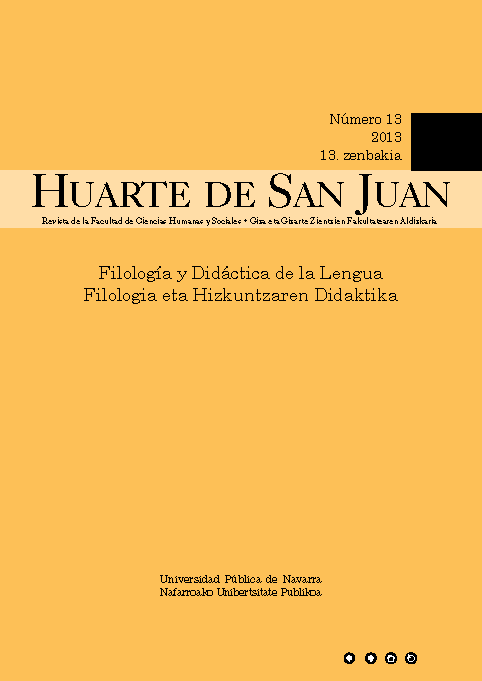Los Enrarecidos: Rubén Darío, Oscar Wilde y la crítica de los espacios culturales
Palabras clave:
Modernismo, espacio, espacialidad, transgresión, extrañoResumen
En este estudio se repasan las propuestas estéticas de dos figuras literarias con un papel paradigmático en el desarrollo del modernismo: Rubén Darío y Oscar Wilde. Ambos recuperan la fascinación por «lo extraño » –o lo raro– que ya había sido fundamental en previas corrientes literarias, y buscan producir un espacio que les sea propio a estos excéntricos interlocutores. A partir de la Historia de la Locura, de Michel Foucault, y de Thirdspace, de Edward Soja, observamos cómo la necesidad de producir un espacio para estos «raros» genera una espacialidad cultural determinada por una relación de poder entre los discursos dominantes y las estéticas transgresoras que representan. Con una ambición determinantemente comparatista, este ensayo parte de una lectura crítica de «Max Nordau» para adentrarse en los conflictos espaciales que, según Michel Foucault, son la principal característica del cambio de siglo desde un punto de vista epistemológico.
Descargas
Citas
Baudelaire, Charles (1986): «The Painter of Modern Life», The Painter of Modern Life and Other Essays, trad. y ed. Jonathan Mayne, Da Capo Press, New York, pp. 1-40.
Baudelaire, Charles (2010): The Painter of Modern Life, Penguin UK.
Benjamin, Walter (1973): Charles Baudelaire: A Lyric Poet in the Era of High Capitalism, trad. Harry Zohn, NLB, London.
Benjamin, Walter (1979): One Way Street and Other Writings, trad. Edmund Jephcott and Kingsley Shorter, Verso, New York.
Bloom, Harold (2008): Oscar Wilde, Infobase Publishing, New York.
Brioso, Jorge (2003): «Las formas del enigma en Azul de Rubén Darío», Revista Hispánica Moderna, 56.2, diciembre: 285-95.
Călinescu, Matei (1987): Five Faces of Modernity: Modernism, Avant-Garde, Decadence, Kitsch, Postmodernism, Duke University Press.
Darío, Rubén (1972): Los Raros, Editorial Universitaria Centroamericana, San José, C.R.
Darío, Rubén (1955): Obras completas, A. Aguado, Madrid.
Eliot, Thomas S. (1962): The Waste Land, and Other Poems, Harcourt, New York.
Eliot, Thomas S. (1963): Murder in the Cathedral, Houghton Mifflin Harcourt, Evanston, IL.
Foucault, Michel (1999): Estética, ética y hermenéutica. Obras esenciales, Vol. III, trad. Ángel Gabilondo, Paidós, Barcelona.
Foucault, Michel (1973): Madness and Civilization, trad. Richard Howard, Vintage Books, New York.
Foucault, Michel (1994): The Order of Things, Vintage Books, New York [1970].
Gale, Leonore V. (1975): «Rubén Darío y el poema en prosa modernista», Anales de Literatura Hispanoamericana, 4: 367-80.
Galindo Villarroel, Óscar (1998): «Darío y Huidobro: Del modernismo a la estética del sugerimiento», Anales de Literatura Hispanoamericana, 27: 211-223.
Glick, Elisa (2001): «The Dialectics of Dandyism», Cultural Critique, 48, primavera: 129-63.
Holland, Eugene W. (2006): Baudelaire and Schizoanalysis: The Socio-Poetics of Modernism, Cambridge University Press.
Ibarra, Cristóbal H. (1958): Francisco Gavidia y Rubén Darío, semilla y floración del modernismo, Departamento Editorial, San Salvador.
Jrade, Cathy L. (1983): Rubén Darío and the Romantic Search for Unity: The Modernist Recourse to Esoteric Tradition, University of Texas Press, Austin.
Jrade, Cathy L. (1980) «Rubén Darío and the Oneness of the Universe», Hispania, 63.4, diciembre: 691-8.
Lehman, Robert S. (2009): «Eliot’s Last Laugh: The Dissolution of Satire in ‘The Waste Land’», Journal of Modern Literature, 32.2, invierno: 65-79.
Mantero, José M. (2007): «‘Rudos y primitivos, pero también poéticos’: Rubén Darío y el proyecto imperialista», Latin American Literary Review, 35.70: 31-42.
Phillips, Allen W. (1977): «A propósito del decadentismo en América: Rubén Darío», Revista Canadiense de Estudios Hispánicos, 1.3: 229-54.
Rodríguez-Peralta, Phyllis (2009): «Las últimas páginas en la creación poética de Rubén Darío», Revista Iberoamericana, 55.146: 395-414.
Rosano Scarano, Laura (1986): «La función de la poesía en Los Raros de Rubén Darío», Revista de Crítica Literaria Latinoamericana, 12.23: 117-25.
Ruiz Barrionuevo, Carmen (2002): Rubén Darío, Síntesis, Madrid.
Sanyal, Debarati (2006): The Violence of Modernity: Baudelaire, Irony, and the Politics of Form, JHU Press.
Silva, José Asunción (1996): De sobremesa, Hiperión, Madrid.
Sorensen Goodrich, Diana (1985): «Azul: Los contextos de lectura», Hispamérica, 14.40, abril: 3-14.
Stavans, Ilan (ed.) (2005): Selected Writings: Rubén Darío, Penguin, New York.
Trigo, Benigno (1994): «Los Raros de Darío y el discurso alienista finisecular», Revista Canadiense de Estudios Hispánicos, 18.2: 293-307.
Whitworth, Michael H. (ed.) (2007): Modernism, Blackwell, Malden, MA.
Wilde, Oscar (1981): The Picture of Dorian Gray, Oxford University Press, New York.
Wohlfarth, Dominik (2008): The Initial Reception of the Novel «The Picture of Dorian Gray» Through the Victorian Public. An Analysis of the Standards of the Literary Critic, Grin-Verlag, München.
Descargas
Publicado
Cómo citar
Número
Sección
Licencia
Todos los artículos son publicados bajo una licencia de uso y distribución Creative Commons (BY-NC-ND 4.0). A cada artículo se le asignará un identificador DOI.
Los autores conservan los derechos de autor y conceden a la revista el derecho de la primera publicación. Los autores podrán establecer acuerdos adicionales para la distribución no exclusiva de la versión de la obra publicada en la revista (por ejemplo, situarlo en un repositorio institucional), con un reconocimiento de su publicación inicial en esta revista. Los trabajos podrán subirse a repositorios institucionales inmediatamente tras la publicación de la revista.
Asimismo, se permite y se anima a los autores a difundir sus trabajos electrónicamente (por ejemplo, en repositorios institucionales, redes sociales académicas o en su propio sitio web).







